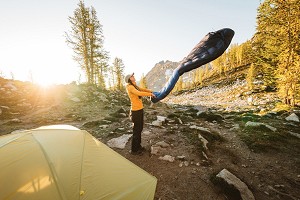
This review was carried out in accordance with Scotland's lockdown guidance on travel for work, and for outdoor exercise within the appropriate local authority area. Please abide by the restrictions where you live.
Mammut's Recovery series of sleeping bags features a wide fit, and a central zip instead of the more standard side opening. With three categories in the series, Relax, Perform, and Protect, there's something suitable for campsite campers; middle-of-the-road users who'll do a bit of everything from backpacking and mountaineering to car camping; and winter alpine types sleeping well below zero. With each, you get the choice of down or synthetic fill. I've been using the midrange Perform Down Bag -7, which seems likely to appeal to the broadest range of readers.
Aimed at trekkers, mountaineers and climbers, but perhaps even more useful for general camping and travel, the Perform Down Bag -7 offers some clever details. But is its warmth for weight up there with the best in this price category; and are the broader fit and central zip features you actually want? Before making an outlay this big it's worth thinking carefully about what you're looking for in a sleeping bag. So here goes...
Men's and women's
I've been using a men's bag; female-specific versions of all the sleeping bags in the range are also available - in this case it's the Women's Perform Down Bag -10. The female models come at a higher temperature rating than the men's equivalent, which reflects the fact that women tend to sleep colder. Though shorter, they are are marginally heavier due to their extra fill.
Weight and pack size
My scales and Mammut's own weight agree exactly. At 1020g, the men's Perform Down Bag -7 may be more a midweight than an ultralight option, but given the sheer amount of sleeping bag you're getting here (more on size and fit later) I'm pleasantly surprised that it weighs just over 1kg. For a down bag that'll take you under zero (how far under? I'll also look at that below) I think the weight is fine. But you can certainly get lighter models of similar warmth, or warmer. The equivalent women's bag, meanwhile, weighs 1090g.
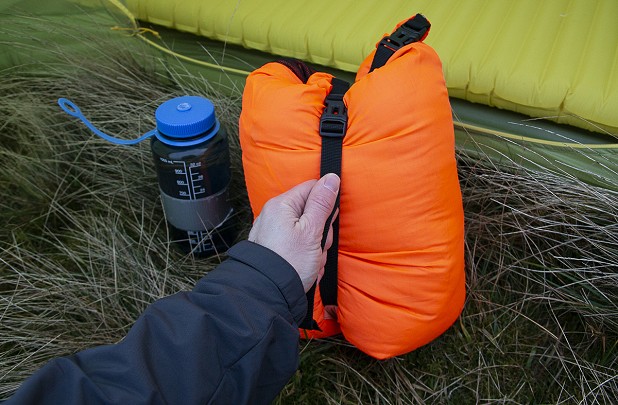
A stuff sack is provided, with a rolltop closure and a single compression strap, and this weighs an additional 75g. This is effective at squashing down the bag for packing, but unlike some compression sacks it's not waterproof, so you'll need to carry a separate drybag too, adding a little weight to the overall package. Though it's a big sleeping bag it can be squeezed into a manageably small size for carrying, so while it's not in the ultra-compact category it's certainly a viable option for backpacking, mountaineering and cycle touring, unless you're really pushed for space and counting every gram.
Warmth and temperature ratings
Every metabolism is different, and likewise every night you spend in a sleeping bag. Aside from the absolute thermometer temperature the variables include draught, humidity, your state of tiredness, how well fed you are, what you're wearing, and the quality of your sleeping mat. For this reason the temperature ratings provided by official testing (in a lab with a special mannequin) should only be taken as a rough guide to how a sleeping bag will feel in use.

In accordance with standard EN ISO 23537-1:2016 the Perform Down Bag -7 is rated: -1C Comfort; -7C Temperature Limit and -25C Extreme Temperature. What do the numbers mean?
- Comfort is the temperature down to which a sleeping bag user with a relaxed posture, such as lying on their back, is globally in thermal equilibrium and just not feeling cold;
- Temperature is the lower limit at which a sleeping bag user with a curled up body posture is globally in thermal equilibrium and just not feeling cold;
- Extreme is where there's a risk of health damage by hypothermia.
Anyone keen not to suffer or die will ignore sleeping bag Extreme ratings altogether, and in this case I think you'd be in trouble well before the temperature got down to -25. But even the quoted Temperature Limit seems optimistic to me, and as such the -7 part of the name is potentially misleading.
Back in November I slept in windy weather a few degrees above zero, in an inappropriately well-vented tent. While I started off in thermals, to stay the right side of uncomfy over the night I had to add socks, trousers, a midlayer and a hat. Towards morning I also resorted to zipping a lightweight gilet around my feet.
More recently I camped in the snow at about 600m altitude. Again it was windy, but this time I wisely had a less draughty tent. Overnight the temperature fell several degrees below zero, though not quite as low as -7 if the forecast was correct. To ensure I stayed happy all night I started off wearing thick knee length woolen socks, a hat, a long sleeved baselayer, a midweight softshell, and very warm baselayer leggings (both from ME's Kinesis range); in the early hours I also used a beefy down jacket as an additional duvet over the top. It was fine, but I would not have wanted to do without that clothing.
When I tried it out in dry, breezy sub-zero weather below the snow line, additional clothing was again required. On all these occasions I used an insulated mat, to ensure that I wasn't compromising the sleeping bag's warmth from below.
Though I tend to run quite warm, I wouldn't intentionally push this sleeping bag down to Mammut's -7 Temperature Limit. My rough, subjective lower limit for comfortable real world use would be somewhere between that and the -1 Comfort Limit, and with the option of adding plenty of clothes I might split the difference at around -3. With that in mind I'd say this should be considered a 3-season bag, best suited to conditions just above or just below zero.
What's inside?
This design is also on offer as the Perform Fiber Bag -7 with a polyester fill, at £180. While Mammut do not currently provide weights on their website for either option, it's fair to assume that for the same temperature rating the synthetic version is going to be significantly heavier and bulkier than the down. If you can afford it then down will be preferable except for sustained use in really wet conditions, when synthetic would have obvious advantages (if it's that miserable, what are you doing camping?).
RDS-certified grey duck down is used in the Perform Down Bag, at a 90:10 down:feather ratio, and a fill power of 700. Mammut tell me there's 450g of fill in the men's bag, while the women's model gets 540g (as I mentioned above, women generally feel the cold more at night). This isn't a skimpy bag, and the loft feels decent. However, while 700fp down should certainly be considered quality stuff, it's not going to win a straight warmth:weight fight against bags of a similar fill weight that use 800fp or higher. The higher the fill power, the fluffier the down, and thus the more air it can trap to keep you warm for a given weight of fill.
Warmth for your pound - is it good value?
At £340 I'd consider the Mammut Perform Down Bag -7 a good buy if you're after something decent for all-round camping, but around this budget it's not going to be the best choice for the most weight conscious uses, since alternatives are available which offer similar levels of insulation for less overall weight. For instance, for £355 you could have a Rab Neutrino Pro, filled with 400g of 800fp goose down, and offering exactly the same lab ratings as the Perform Down Bag while weighing a couple of hundred grams less. Coming in at a similar price, the Therm-a-Rest Parsec 20 also features 800fp goose down and offers fairly comparable warmth while saving you over 100g. Spend (considerably) more money and you can have a sleeping bag that's both lighter and warmer still.
Fabric and construction
The polyamide outer feels light but tough, and has a DWR finish to help protect the contents from drips and condensation. It also appears to be sufficiently down-proof, since I've not yet noticed any fluffy escapees. Its polyester lining isn't particularly loud and rustly when you roll over, and having slept a few nights indoors in this bag I don't think it feels as clammy on bare skin as some.
While Mammut don't mention how the bag is put together on their website I can confirm that it's a box-wall construction, without any stitching right through, which would create cold spots.
Size and shape
For men this sleeping bag comes just as a size Large (for users between 180-195cm), while women get Medium (165-180cm). Being 183cm tall I don't find there's much excess length, but it's noticeably wider throughout the bag than many premium models I've used - 80cm at the shoulders tapering to 55cm towards the feet (size M is the same width). Mammut say the generous dimensions aid a natural sleeping position; that is certainly so, and if it's a comfy bag for campsites that you're after then this relaxed fit is great, allowing you to fidget around without feeling restricted. However you can't have your cake and eat it, and the room will have drawbacks for some users. While it's true that narrower mummy-shaped sleeping bags can feel claustrophobic, they're made like that for a reason.
Excess space is both going to add some weight and bulk, and reduce insulating performance. In a looser sleeping bag there's more dead volume for you to warm up, and more air circulation inside. While I'm not skinny by any stretch, the space on offer in the Perform Down Bag is arguably too much for me, something that's clear once the outside temperatures get close to the limit of the bag. At the foot end, for instance, it's so roomy that I've found my feet can easily get cold. For the best insulating performance, a closer fit (albeit not so tight as to compress the fill) would have been better, and for this reason the cut of the Perform Down Bag suggests more of a casual all-round sleeping bag than a spartan mountaineering/backpacking specialist that squeezes every last degree of insulating performance out of its weight.
All that said, if you are built on the large side, and find some sleeping bags too tight, then you may get on better with this than I have, since you'll be ending up with less excess space. As with most things, it helps if you can try a sleeping bag for size (not that easy in present circumstances).
Features
The centre zip makes getting in and out just a bit easier than in a bag with a side zip, and this helps when dressing or undressing. When you overheat and want to air your legs, it also gives you an effective way to vent one part of the bag without opening the rest. With a side entry, I tend to find that unzipping lower down doesn't really achieve much, while folding over the top of the bag to cool off is comparatively all-or-nothing. On the other hand having a centre zip pretty effectively scuppers using the Perform Down Bag as a quilt, and I have noticed not being able to do this when sleeping indoors (we all use a sleeping bag indoors sometimes, after all).
On the Perform Down Bag you get a double zipper, the top one of which has a cool anti-snag plastic cover, something I've not seen before. This is a clear improvement on a standard zipper, since there's little more frustrating than snagging your zip when trying to extract yourself in the night for a pee. But is this centre zip as warm? The internal anti-draught baffle isn't huge, and could easily get folded back in your sleep, leaving you with an un-insulated zip running down the middle of your body, the area of the bag I'd imagine is most prone to heat loss. While it has advantages, the central opening used here also has some obvious drawbacks, so on balance I'm not convinced it is an advance.
To eliminate the crinkly aural annoyance often associated with zipping your head into a sleeping bag, the hood area is lined with a non-rustling fabric, which I have found does actually make the Perform Down Bag a nicer, more peaceful place to cocoon yourself. This thoughtful touch demonstrates the attention that Mammut have given to detail.
If you leave your phone out in the tent at night then you risk the cold draining the battery, but it's hard to keep track of small items like this if they're loose in your sleeping bag. Here you get a big inside zipped pocket for a watch, phone, torch etc - and since it's mesh, you can see the contents. Every bag should have one!
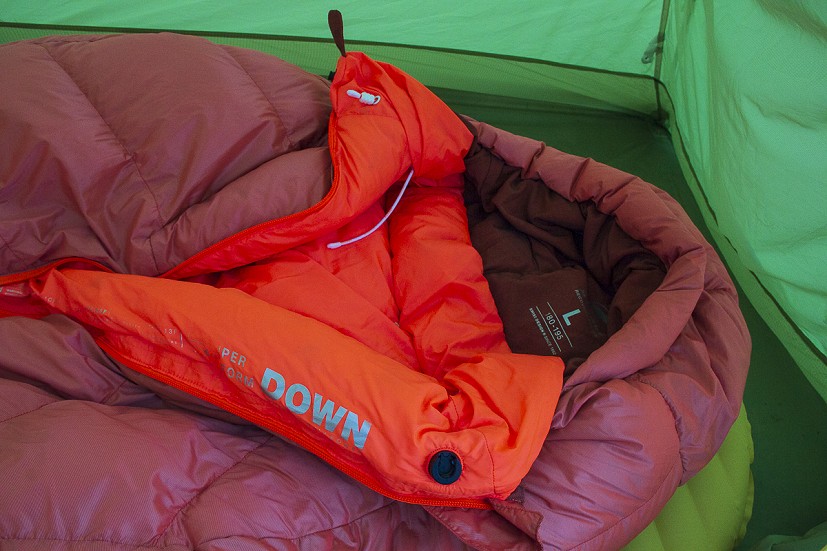
Luminous pull cords at the hood are a useful addition, as anyone who's tried to extricate themselves from a sleeping bag in the dark will appreciate. Instead of the standard sprung toggle - which can be both fiddly and a bit intrusive when you roll over on them - the adjuster here is a little rubbery sleeve that you squeeze to slide up and down the elastic. I like this simplicity. You get one drawcord around the edge of the hood, and another at the neck baffle, effectively keeping draughts out.
The magnetic top clip is supposed to be easy to use, but when half asleep I sometimes struggle to disengage it. The trick is to slide the two halves apart, not pull like a popper. I'm not sure why it's supposed to be superior to a press stud, because for me it marginally adds faff rather than reducing it.
As if to emphasise their promise of a comfy night, Mammut have added a freebie padded eye mask and ear plugs with every bag. Neither are something I'd use, but some folk are bound to appreciate the gimmick. A large mesh storage sack is also provided, for keeping your bag uncompressed and aired when not in use.
Summary
There's a lot to like about the Perform Down Bag -7, and I'm particularly keen on details such as the drawcords, the quiet hood lining, and the inside pocket. However its most visible point of difference, the central zip, doesn't strike me as an advantage overall. Perhaps what really distinguishes this sleeping bag is its relaxed, wider fit, and just like the zip this has both pros and cons. If you're wanting a comfy, unrestricted night's sleep then it's great, but the spaciousness does not come without cost, and I've found that it compromises the insulating performance to an extent - though by how much it's hard to be sure. The most weight conscious users will find lighter models that offer similar warmth for roughly the same price, and if you're prepared to throw serious money at the problem then you can get something both warmer and lighter. However it's as an all-rounder that the Perform Down Bag really excels, offering comfort and luxury in the campsite while still being perfectly capable when used for backpacking or mountaineering. And perhaps you're a larger person, who'd appreciate a bit more breadth in the body? If so then this sleeping bag is definitely worth a closer look.
Mammut say:
Perform Down Bag. Sleep to recover. Sleep as comfortably as in your own bed. The sleeping bag concentrates on natural sleeping requirements and focuses on noise, space and temperature: head area made from a special material that prevents irritating rustling noises. Sleeping bag design based on a natural sleeping position for sufficient space. Central zipper for optimum climate regulation. Perform Down Bag. The performance-oriented sleeping bag for restorative hours.
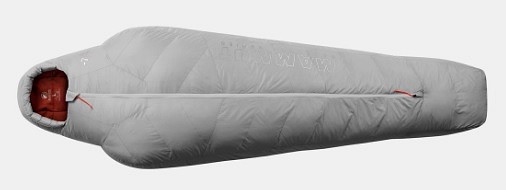
Men's: Perform Down Bag -7
Women's: Perform Down Bag -10
- Sizes: women M 165-180cm; men L 180 - 195cm
- Weight: women 1090g; men 1020g
- Fill: 90% Grey Duck Down, 10% Grey Duck Feather
- Fill weight: 540g women; 450g men
- 700 cuin fill power with ethically procured and certified RDS down
- Design based on a natural sleeping position for more space
- Central zipper for optimum climate regulation.
- Restorative sleep thanks to a newly developed sleeping bag shape
- Intuitive climate regulation with a central 2-way zipper
- Comfortable, soft material in the hood reduces noise and increases comfort
- Including deep sleep mask and earplugs to reduce light and noises
- Easy-to-use magnetic closure on the insulation collar
- Improved YKK zipper prevents jamming of material
- Lightweight and extremely compressible
- Better insulation thanks to an insulation collar
- Internal pocket to store valuables
- Supplied with a packing bag
- Supplied with a storage bag
- Drawstring for easy adjustment of the hood and insulation collar
- Tested according to standard EN ISO 23537-1:2016
- Revised anatomical foot box for greater comfort without extra weight
- Zipper garage reduces cold areas at the end of the zipper
- Insulated covering along the zipper to protect from cold bridges and enhance climate comfort
- Insulation chamber around the hood opening to protect from cold and wind
- PFC-free DWR treatment
- Lining made from 100% recycled polyester
For more info see mammut.com




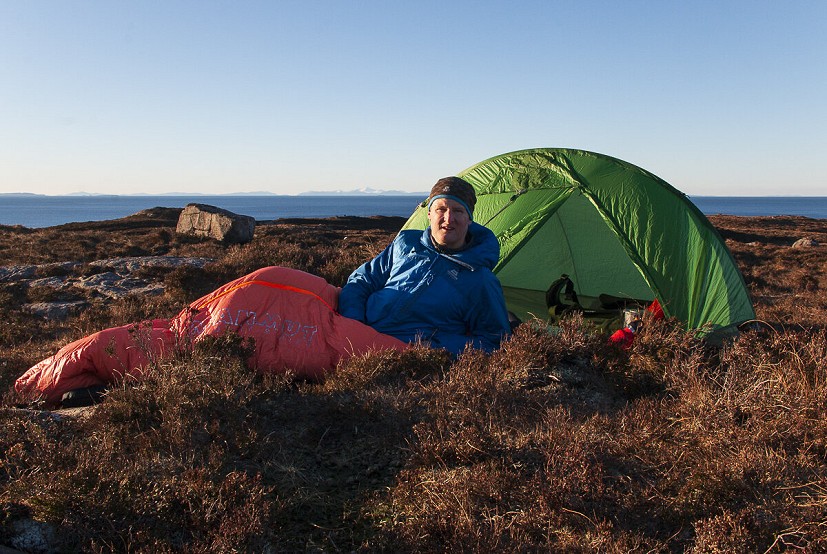

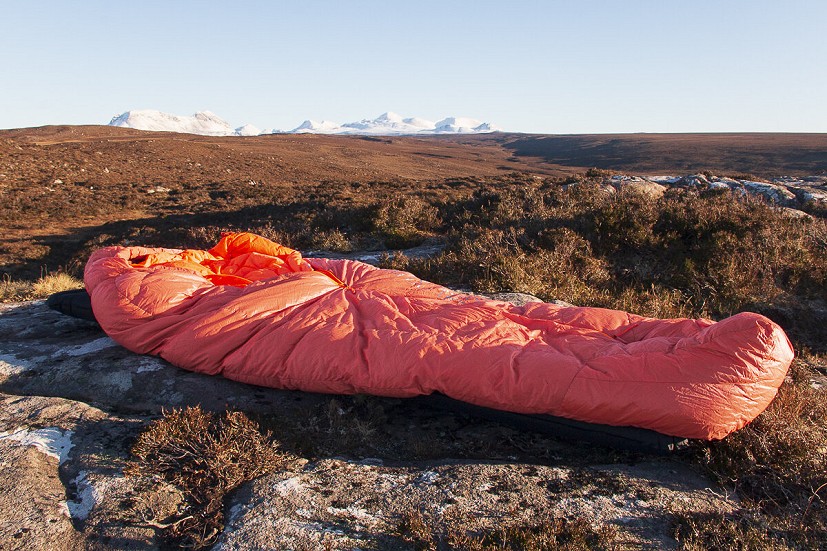
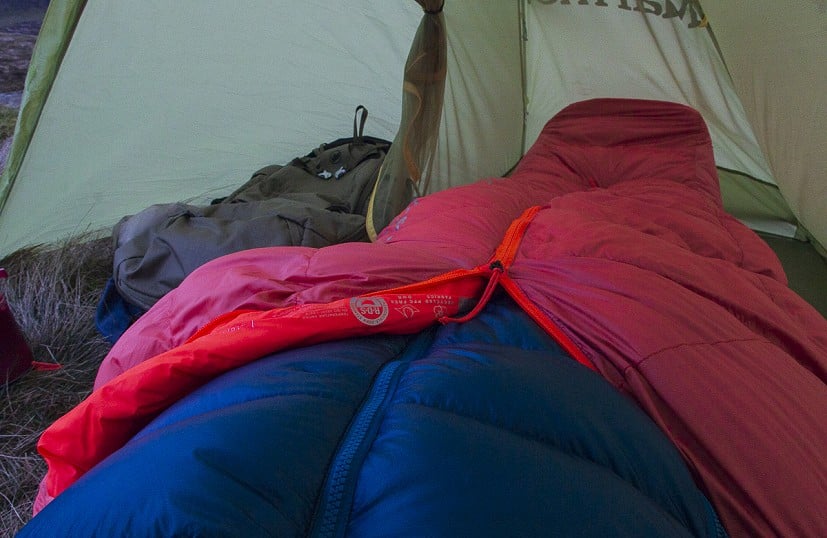
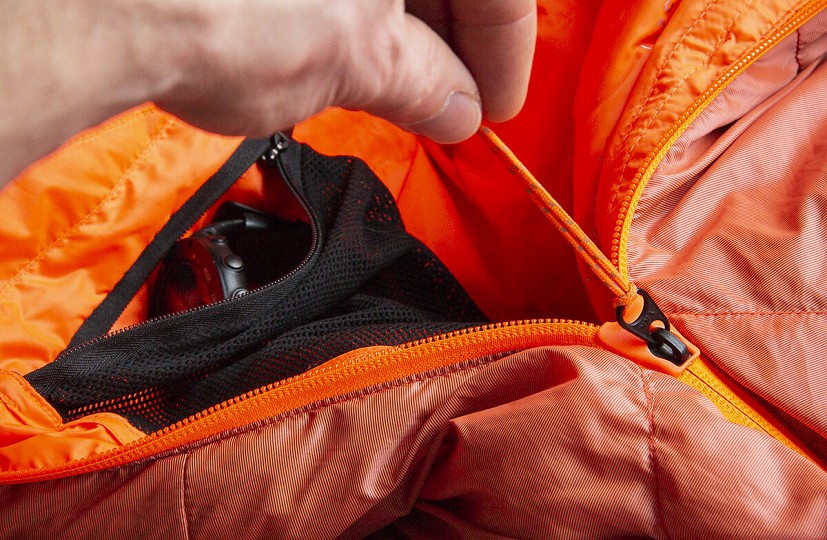

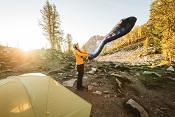
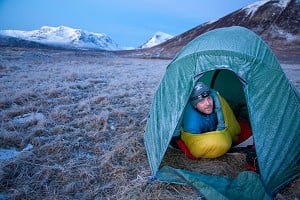

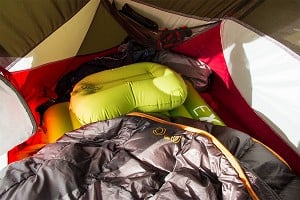
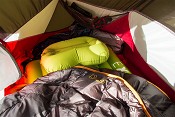
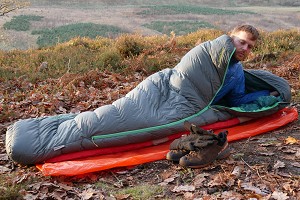
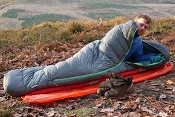
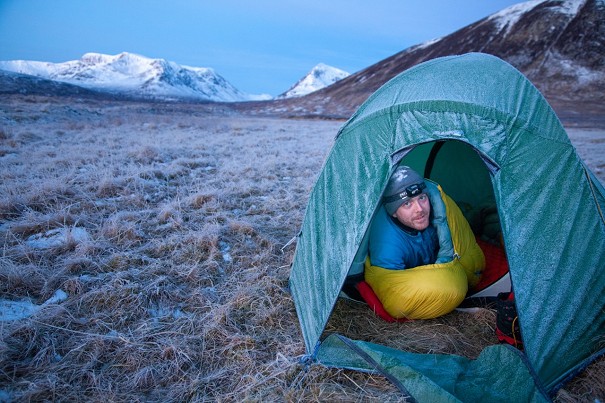
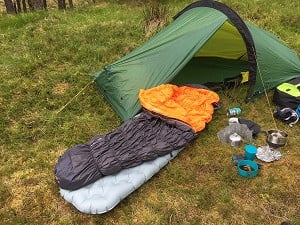

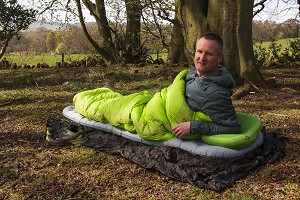

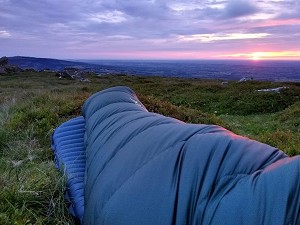
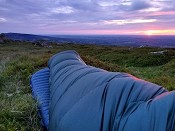


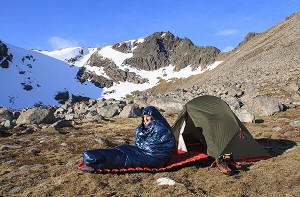

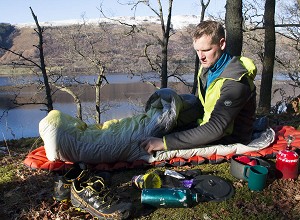



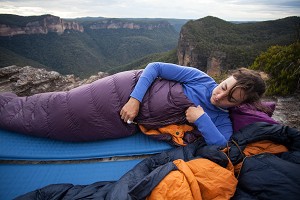
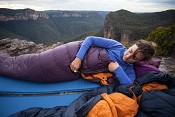
Comments